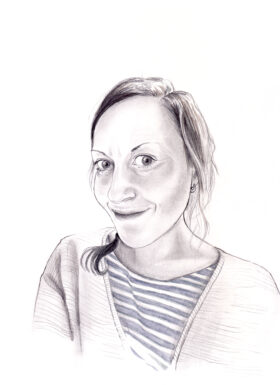-
Ammodo Science
Award for groundbreaking research2024 -
Ammodo Science Award
The Ammodo Science Award for groundbreaking research is intended to stimulate potentially groundbreaking research. Such research is usually the result of team work, and for that reason this Award is for research being carried out by a group of researchers working together, and is intended to recognise the contribution of every member of the group. The Award is presented every two years in four scientific domains: Biomedical Sciences, Humanities, Natural Sciences and Social Sciences.
-
Nomination & Selection
Each edition, the Ammodo Science Award for groundbreaking research includes a cash prize of 1,600,000 euros for each of the science domains Natural Sciences and Biomedical Sciences and a cash prize of 800,000 euros for each of the science domains Humanities and Social Sciences. The rectors of the fourteen Dutch universities affiliated to Universities of The Netherlands (UNL) may nominate a maximum of one research project per scientific domain.
-
Winners
The Ammodo Science Award for groundbreaking research focuses on potentially groundbreaking research and ensures that all researchers involved in the winning project are recognised and rewarded.
Anja Spang
Laureate Natural Sciences 2023

Anja Spang (1983) completed her PhD on archaea in 2013 in Austria, supported by the Austrian Academy of Sciences. She was then awarded a Marie Curie Fellowship to join Dr Thijs Ettema’s research group in Sweden. In 2017, she transferred to the Royal Netherlands Institute for Sea Research (NIOZ) where she established an independent line of research with support which included a WISE tenure-track award from the NWO.
Spang received several grants and awards, including an ERC Starting Grant, to support her research on archaea and the evolution of cellular life. She was awarded tenure in 2021, and currently works as research director at NIOZ and as associate professor of Symbioses in Evolution at the University of Amsterdam.
WebsiteResearch focus
Anja Spang’s field of research is the special role that various micro-organisms such as archaea have played in major evolutionary changes, including the origin of eukaryotes to which humans also belong.
Mysterious microbes
There was a time when scientists thought that that the natural world was made up only of visible species, such as humans, plants and animals. We now know better: as much as two-thirds of life on earth consists of microbes that cannot be seen without a microscope. These microbes are archaea and bacteria, together also called prokaryotes. Unlike eukaryotes (to which humans belong), they have simple cells without a cell nucleus. Archaea and bacteria are the oldest cellular life forms and are found everywhere on Earth.
As an evolutionary microbiologist Anja Spang is fascinated by archaea, and in particular how evolution is influenced by the symbiosis between different microbe species. What were the ancestors of archaea and bacteria? How and when did eukaryotes arise? And how did all these cells evolve over time into the vast biodiversity we see on Earth today? These are some of the fundamental questions Anja is successfully beginning to answer.
So, in recent years, Anja has discovered an impressive number of new variants of archaea, for example Lokiarchaea and related lineages that make up the Asgard archaea. By innovatively reconstructing the DNA of the Asgard archaea, Spang and her team, have found revolutionary evidence in support of the hypothesis that eukaryotic organisms evolved from a symbiosis between archaea and bacteria two billion years ago leading to the belief that, without archaea, humans would never have arrived. This insight has given rise to a proposal for an update of the ‘Tree of Life’, the well-known model for the evolution of organisms.
Currently, Spang is studying the DPANN archaea, an enigmatic group of microbes believed to be afflicted with a symbiotic or parasitic lifestyle. Her first major publications on the subject reveal that the DPANN archaea are more diverse than initially thought, and presumably have a variety of different hosts.
What makes Spang’s research especially relevant at present is that archaea not only shed light on our evolutionary history, but also influence our current climate. Yet we still know little about their precise function. That is therefore the research area that Spang intends to focus on in the near future. How do archaea influence other organisms, and what is the cycle of nutrients? And how do all these organisms interact with each other? Answering questions like these will help us gain a better understanding of the cell biology of archaea, our microbial ancestors, as well as the functioning of our ecosystems.